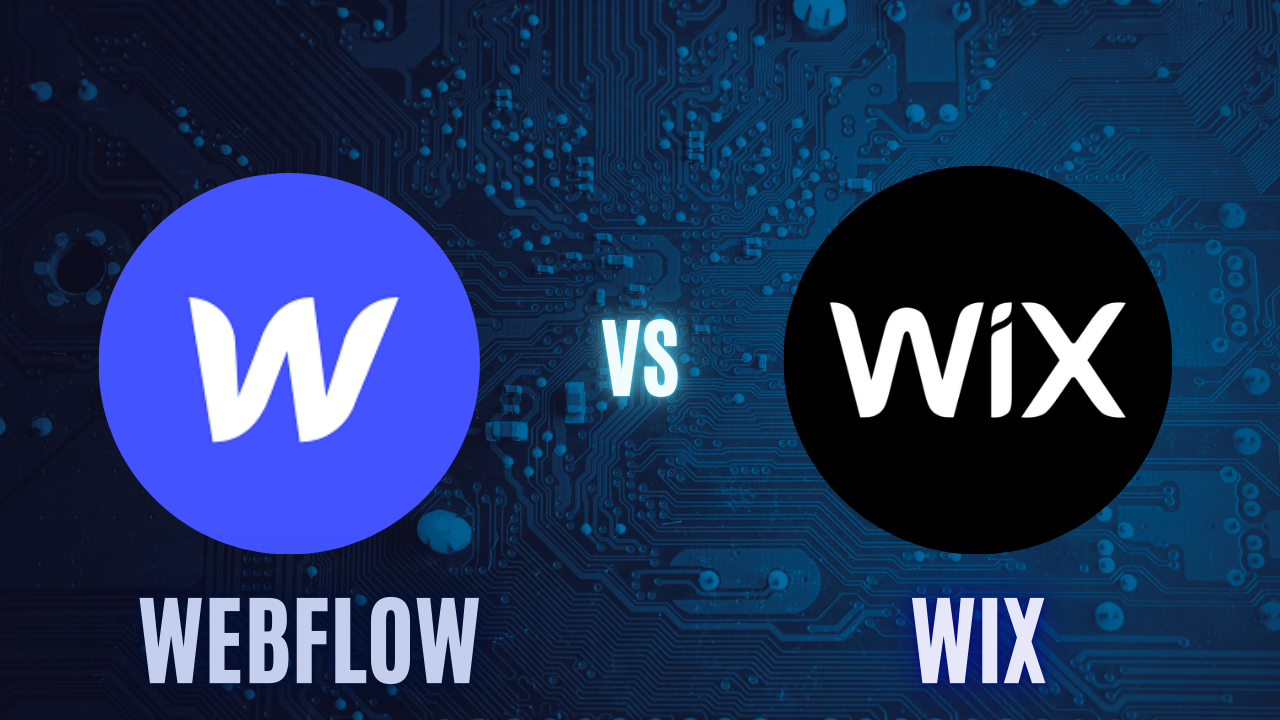If you’re looking to build a website, chances are you’ve come across Webflow and Wix. Both platforms offer powerful tools to create stunning websites without needing to write a single line of code. But which one is right for you?
In this blog, we’ll break down Webflow vs Wix in an easy-to-understand way. We’ll explore what they are, what to look for when choosing a website builder, why people use them, how to use them, and some general statistics to help you make an informed decision.
What Are Webflow and Wix?
Before we compare them, let’s first understand what each platform is
What is Webflow?
Webflow is a professional-grade web design and development tool that allows users to create highly customizable websites. Unlike traditional website builders, Webflow gives you full control over design, layout, animations, and interactions.
- It is best suited for designers, developers, and advanced users who want a custom-built website.
- Webflow provides a visual editor while also allowing access to HTML, CSS, and JavaScript for more customization.
- It includes an advanced CMS (Content Management System) that makes managing dynamic content (such as blogs, portfolios, or business sites) easier.
- Webflow lets you export your website’s code, which is useful if you want to host it on a different platform.
What is Wix?
Wix is a user-friendly, drag-and-drop website builder designed for beginners. It offers an easy way to build websites with pre-designed templates and requires no technical skills.
- Wix is ideal for small businesses, personal websites, and startups.
- It provides hundreds of customizable templates, so you don’t need to design a website from scratch.
- Wix uses Artificial Design Intelligence to automatically create a website based on your preferences.
- It includes built-in e-commerce features, making it easier to set up an online store.
Key Differences Between Webflow and Wix
| Feature | Webflow | Wix |
|---|---|---|
| Ease of Use | Requires learning, best for advanced users | Very easy, beginner-friendly drag-and-drop |
| Design Control | Full creative freedom, no restrictions | Limited customization, template-based |
| SEO Features | Advanced SEO capabilities, clean code also plugin like Rank Math | Basic SEO tools, less technical control |
| E-Commerce | Requires manual setup, powerful customization | Built-in e-commerce tools, easy to set up |
| CMS (Content Management System) | Advanced CMS for dynamic content | Basic CMS, best for static pages |
| Pricing | Higher cost, aimed at professionals | More affordable, great for small businesses |
| Code Export | Can export HTML, CSS, and JavaScript | No option to export code |
| Best For | Designers, developers, businesses needing custom designs | Beginners, small businesses, personal websites. |
What to Look for in a Website Builder?
When deciding between Webflow vs Wix, consider the following factors:
Ease of Use
- Webflow is more advanced and requires a learning curve. It offers greater control but may feel overwhelming for beginners.
- Wix is easy to use, with a simple drag-and-drop editor that lets anyone build a website quickly.
Design Flexibility
- Webflow offers complete creative freedom, allowing users to design websites from scratch with unlimited customization.
- Wix is template-based, which makes it faster to build a site but limits customization compared to Webflow.
SEO Features
- Webflow generates cleaner, faster-loading code, which improves search engine rankings.
- Wix has SEO tools but doesn’t offer as much control over technical SEO settings.
E-Commerce Capabilities
- Webflow supports e-commerce, but it requires manual setup and more effort to configure properly.
- Wix has built-in e-commerce tools, making it easier to set up an online store with minimal effort.
Pricing
- Webflow is more expensive and mainly targeted at professionals who need advanced features.
- Wix is more budget-friendly, making it a great choice for startups and small businesses.
Why Use Webflow or Wix?
Why Choose Webflow?
- Full Creative Control – Webflow lets you customize every aspect of your site, including animations, interactions, and layouts.
- Advanced CMS – If you need a website with dynamic content (such as blogs, portfolios, or listings), Webflow’s CMS makes it easy to manage.
- Exportable Code – Unlike Wix, Webflow allows you to export your HTML, CSS, and JavaScript in case you want to move your site elsewhere.
- Better for Web Developers – If you have technical skills, Webflow allows you to add custom code and tweak settings to fit your needs.
Why Choose Wix?
- Beginner-Friendly – Wix is designed for non-tech users, with a simple drag-and-drop editor and an intuitive interface.
- Pre-Made Templates – Wix offers hundreds of templates that make website creation quick and easy.
- Wix ADI (Artificial Design Intelligence) – If you don’t want to design your site, Wix ADI can automatically build one for you.
- Affordable Pricing – Wix’s plans are more budget-friendly, making it ideal for small businesses and individuals.
How to Use Webflow and Wix?
How to Use Webflow
- Sign Up and Choose a Plan – Webflow offers a free plan, but professional use requires a paid subscription.
- Select a Template or Start from Scratch – You can use a pre-built template or design your website from scratch.
- Use the Visual Editor – Webflow’s editor provides advanced design tools and shows the underlying HTML, CSS, and JavaScript.
- Set Up CMS Collections – If you’re creating a blog or portfolio, Webflow’s CMS makes managing dynamic content easier.
- Customize Interactions and Animations – Add scroll effects, hover animations, and more to enhance user experience.
- Publish Your Website – Choose Webflow’s hosting or export your code if you want to host elsewhere.
How to Use Wix
- Sign Up and Pick a Plan – Wix offers a free plan, but paid plans unlock more features.
- Choose a Template – Wix provides hundreds of industry-specific templates to start with.
- Use the Drag-and-Drop Editor – Customize text, images, and layouts easily with Wix’s intuitive interface.
- Use Wix ADI (Optional) – If you don’t want to design manually, Wix ADI can automatically generate a website based on your preferences.
- Add Features and Apps – Wix has an App Market with tools like contact forms, booking systems, and e-commerce features.
- Publish Your Website – Once satisfied, click “Publish” to make your site live instantly.
Making the Right Choice for Your Website
Both platforms have their strengths, making the choice depend on your specific needs. If ease of use and affordability are your priorities, a beginner-friendly option is the best fit. However, for those who require advanced customization, design flexibility, and better control over SEO, a more professional tool will be more suitable. It’s important to consider your budget, experience level, and website goals before deciding. The right choice will help you create a website that meets your needs efficiently and effectively.
Additionally, think about the long-term scalability of your website. If you plan to expand, add more features, or improve performance, choosing a platform that supports future growth is essential. No matter which option you select, focusing on user experience, design, and functionality will ensure your website stands out and serves its purpose effectively.
Interesting Reads:
How to install WordPress on cPanel?
Last modified: April 11, 2025




